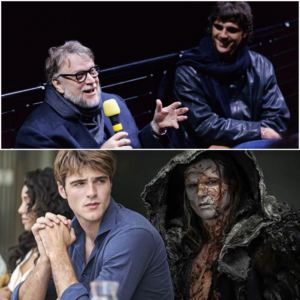In a shocking act of violence that has left a quiet Michigan community reeling, multiple people were shot Sunday at The Church of Jesus Christ of Latter-day Saints in Grand Blanc, approximately 50 miles north of Detroit. Authorities confirmed the shooter is down, but the tragedy unfolded amid chaos as the church building erupted in flames, compounding the horror for worshippers and first responders alike. As details emerge from this devastating incident, questions swirl about motives, the extent of injuries, and how such a peaceful place of worship became the scene of unimaginable terror.
The shooting occurred during a routine Sunday service at the Grand Blanc Stake Center, a modest yet welcoming structure that has served as a spiritual hub for local members of the Church of Jesus Christ of Latter-day Saints—commonly known as Mormons—for decades. Eyewitnesses described a serene morning shattered by gunfire around 10:45 a.m., just as the congregation was deep into hymns and sermons. “It was like something out of a nightmare,” said one survivor, who requested anonymity due to ongoing trauma. “We were singing about peace and love, and then suddenly, pops—like fireworks, but we knew it wasn’t.”
Law enforcement responded swiftly to reports of an active shooter. Genesee County Sheriff’s Office deputies, along with Michigan State Police and local Grand Blanc Township officers, arrived within minutes, confronting the assailant in the church’s main chapel. The shooter, whose identity has not yet been released pending notification of next of kin, was neutralized by police gunfire after refusing commands to surrender. “The suspect is down and no longer a threat,” Sheriff Christopher Swanson announced at a hastily convened press conference Sunday afternoon. “Our hearts go out to the victims and their families. This is a dark day for our community.”
Compounding the tragedy, flames were reported engulfing parts of the building shortly after the shooting began. Firefighters from the Grand Blanc Township Fire Department battled the blaze, which investigators believe may have been intentionally set by the shooter as part of the attack. The fire caused extensive damage to the chapel and adjacent classrooms, forcing evacuations amid billowing smoke and collapsing ceilings. “We contained the fire, but the structure is a total loss,” Fire Chief Robert Burdette stated. “It’s miraculous more lives weren’t lost.”
Initial reports indicate at least seven people were shot, with injuries ranging from critical to minor. Two victims were pronounced dead at the scene—a 52-year-old father of four and a 68-year-old grandmother, both longtime church members. The others were rushed to nearby Hurley Medical Center in Flint and Genesee Memorial Hospital, where medical teams worked frantically to stabilize them. Among the wounded are children, including a 10-year-old girl who was attending Sunday school when the violence erupted. Hospital spokespeople have not released names but confirmed that surgeries are ongoing for several patients. “We’re seeing gunshot wounds to the torso, limbs, and head,” a trauma surgeon at Hurley said anonymously. “It’s a mass casualty event, and our teams are doing everything possible.”
The Church of Jesus Christ of Latter-day Saints, headquartered in Salt Lake City, Utah, has a significant presence in Michigan, with over 45,000 members statewide. The Grand Blanc congregation, part of the Flint Michigan Stake, draws families from surrounding suburbs, fostering a tight-knit community known for its emphasis on family values, missionary work, and charitable outreach. Services typically include sacrament meetings, where members partake in bread and water symbolizing the Last Supper, followed by classes on scripture and doctrine. On this fateful Sunday, the theme was reportedly “Finding Peace in Christ,” a message that now carries haunting irony.
As news of the shooting spread, reactions poured in from across the nation. President Kamala Harris addressed the incident in a statement from the White House: “My thoughts and prayers are with the victims and the Grand Blanc community. This senseless act of violence against a place of worship is an attack on our shared values of faith and freedom. We must come together to end gun violence.” Former President Donald Trump, speaking at a rally in Ohio, called it “another example of the radical left’s hatred toward people of faith,” though no motive has been confirmed. Michigan Governor Gretchen Whitmer declared a state of emergency for Genesee County, mobilizing resources for victims and ordering flags lowered to half-staff.
Local leaders in Grand Blanc, a township of about 8,000 residents known for its parks and family-friendly atmosphere, expressed shock. Mayor Susan Soderstrom held back tears during a vigil Sunday evening: “This isn’t who we are. Our church is a pillar of kindness and service. To see it targeted like this breaks our hearts.” Community members gathered outside the smoldering ruins, holding candles and singing hymns like “I Am a Child of God,” a staple in Mormon worship. “We’re devastated, but our faith will see us through,” said Bishop Michael Reynolds, the congregation’s leader.
Investigators are piecing together the shooter’s background and possible motives. Preliminary reports suggest the assailant was a 42-year-old local man with no apparent ties to the church, though he may have had a history of mental health issues and domestic disputes. Neighbors described him as reclusive, often seen arguing with family members. Police recovered a semi-automatic rifle and several incendiary devices from the scene, indicating premeditation. “We’re exploring all angles, including hate crime possibilities,” FBI Special Agent in Charge Laura Mendoza said, as federal agents joined the probe. The Bureau of Alcohol, Tobacco, Firearms and Explosives is assisting with the arson investigation.
This incident adds to a grim tally of attacks on houses of worship in the United States. From the 2015 Charleston church shooting to the 2018 Tree of Life synagogue massacre in Pittsburgh, places of faith have increasingly become targets for extremists and the mentally unstable. In Michigan alone, recent years have seen heightened tensions, including the 2022 plot to kidnap Governor Whitmer and ongoing debates over gun control. The state has some of the nation’s more permissive firearm laws, allowing open carry without a permit, which critics argue contributes to such tragedies.
The Church of Jesus Christ of Latter-day Saints has faced its share of persecution historically. Founded in 1830 by Joseph Smith in New York, the faith endured mob violence, expulsion from states like Missouri and Illinois, and the murder of its founder in 1844. Members trekked westward to Utah under Brigham Young, establishing a theocratic society that eventually integrated into the U.S. Today, with 17 million members worldwide, the church emphasizes family, education, and self-reliance. In Michigan, Mormon pioneers arrived in the mid-1800s, building communities amid the Great Lakes’ lumber boom. The Grand Blanc church, constructed in 1985, symbolized growth in the region, hosting weddings, baptisms, and community events.
Witness accounts paint a harrowing picture of the attack. Sarah Jenkins, a 35-year-old mother attending with her three children, recounted hiding under pews as shots rang out. “I heard the door burst open, and then screaming. The shooter was yelling something incoherent, firing indiscriminately.” Another worshipper, elderly veteran Tom Harlan, described tackling a child to the ground to shield them. “I’ve seen combat in Vietnam, but nothing prepares you for this in your own church.” As flames spread, congregants formed human chains to evacuate the injured, a display of heroism amid panic.
First responders’ bravery has been hailed. Officer Jenna Patel, one of the first on scene, entered the burning building to rescue trapped individuals. “We train for this, but it’s different when it’s real,” she said. Paramedics treated victims on-site, applying tourniquets and performing CPR. The fire’s intensity delayed full access, but drones and thermal imaging helped locate survivors.
Community support has surged. Neighboring churches, including Catholic and Protestant congregations, offered spaces for temporary worship. A GoFundMe for victims raised over $200,000 by Monday morning, with donations from across the globe. The Red Cross set up shelters for displaced families, while mental health counselors from the church’s Family Services provided grief support. “We’re leaning on our faith and each other,” said Relief Society President Emily Carter, who organizes women’s ministries.
Nationally, the shooting reignites gun control debates. Advocacy groups like Everytown for Gun Safety called for universal background checks and assault weapon bans. “How many more houses of worship must fall before we act?” asked spokesperson John Feinblatt. On the other side, NRA representatives emphasized mental health reforms over restrictions. “Evil people will find ways; we need better intervention,” said executive Wayne LaPierre.
As the investigation unfolds, questions linger: Was this a hate crime against Mormons? Did warning signs go unheeded? The shooter’s social media, now under scrutiny, reportedly contained rants against organized religion. Family members expressed shock, describing him as “troubled but not violent.” Psychologists point to isolation post-COVID as a factor in rising extremism.
For Grand Blanc’s Mormon community, rebuilding will be physical and emotional. Plans for a new church are already discussed, with church headquarters pledging funds. “We’ll rise from the ashes,” Bishop Reynolds affirmed. Vigils continue, drawing diverse crowds in solidarity.
This tragedy reminds us of faith’s fragility in a divided world. As victims recover and families mourn, the nation grapples with preventing the next horror. In Grand Blanc, a community united in grief vows to honor the fallen by living the principles they died for: love, forgiveness, and hope.
But let’s delve deeper into the history and impact of this event. The Church of Jesus Christ of Latter-day Saints in Michigan has roots dating back to the 1830s, when missionaries first arrived in Detroit. Early converts faced skepticism, but the faith grew, with stakes (regional organizations) established in the 20th century. Grand Blanc’s congregation, about 300 strong, is known for its youth programs, including scouting and missionary preparation. Many members are professionals—teachers, engineers, healthcare workers—contributing to the local economy.
The attack’s timing, during sacrament meeting, maximized harm. Services start at 9 a.m., with families arriving in Sunday best. The shooter entered through an unlocked side door, a common practice for welcoming visitors. Security at LDS churches is minimal, relying on ushers rather than armed guards, reflecting the faith’s emphasis on trust.
Victim profiles emerge as tributes pour in. The deceased father, David Thompson, was a software developer and volunteer coach. “He lived for his kids,” his wife said. The grandmother, Margaret Ellis, was a retired teacher who baked cookies for new members. “She had a heart of gold,” a neighbor recalled. The injured include a teenage boy shot in the leg while shielding his sister, now hailed as a hero.
Police bodycam footage, expected to be released soon, will provide clarity. Initial 911 calls described “a man with a gun setting fires.” The arson aspect suggests a desire for maximum destruction, possibly inspired by past attacks like the 2019 New Zealand mosque shootings.
Broader context: 2025 has seen a spike in religious violence, with incidents at synagogues, mosques, and now a Christian denomination. Experts attribute this to polarization fueled by social media and political rhetoric. “Hate doesn’t discriminate,” said ADL CEO Jonathan Greenblatt.
Support networks activate. LDS Church President Russell M. Nelson issued a statement: “We mourn with those who mourn. May God’s peace be upon them.” Missionaries in the area pause proselytizing to aid cleanup.
Economic impact: The church’s loss disrupts community events, from food drives to youth dances. Insurance will cover rebuilding, estimated at $5 million.
Personal stories humanize the loss. One family, the Larsons, lost their home in a prior fire; now, their spiritual home burns. “It’s like losing family twice,” said patriarch John Larson.
As night falls on Grand Blanc, the community clings to faith. “We’ll rebuild stronger,” Mayor Soderstrom said. This breaking news story continues to develop, a stark reminder that even in places of peace, vigilance is needed.
In reflecting on this event, it’s clear that the bonds of community will endure. From the ashes, hope rises—a message the victims embodied.





